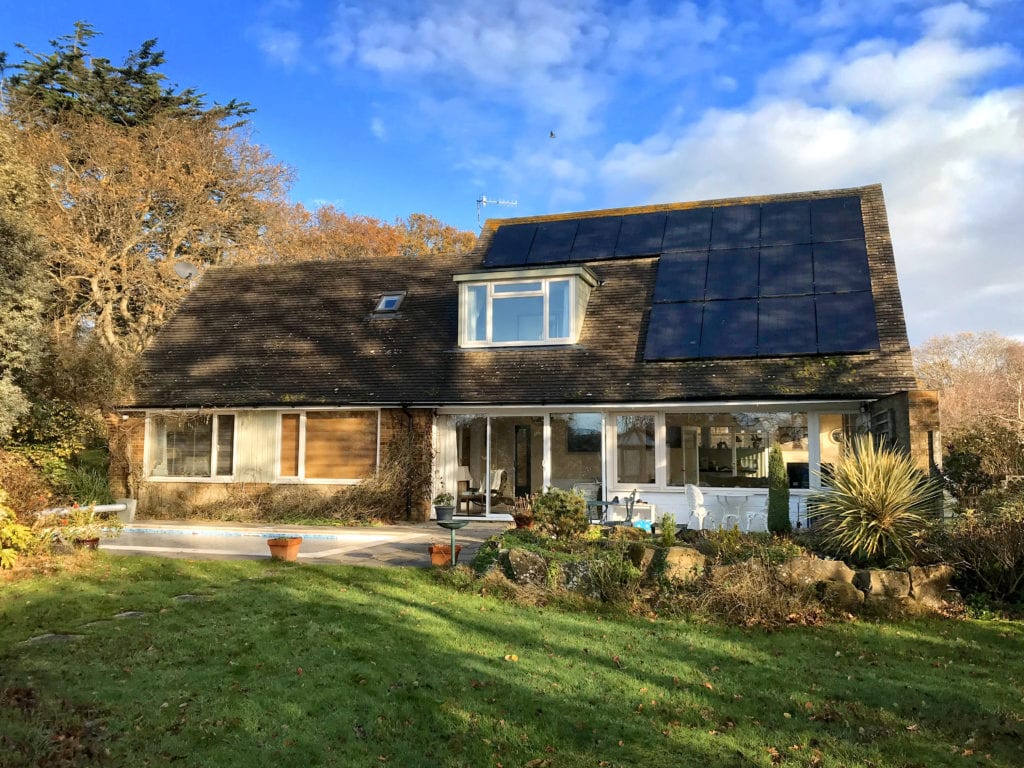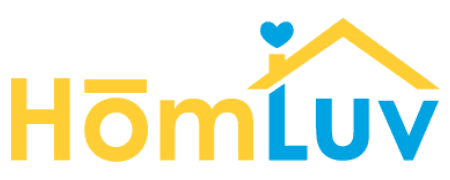A comprehensive list of “green” terms to help you build your dream — and eco-friendly — home

Photo: GettyImages
Going green, eco-friendly, sustainable… Those are all words and phrases you likely hear a lot these days! A lot of industries — including homebuilding — are working to become more environmentally friendly. Want to learn more about all the “green” aspects of homebuilding? Use our Green Glossary to better understand the ins and outs of green homebuilding.
Scroll to peruse the entire glossary in alphabetical order!
—————————————————————————————————————
A
- Active Solar Power—uses an electric photovoltaic (PV) system to convert energy from the sun into electric power typically through the use of solar panels positioned on the roof.
- Aerated Autoclaved Concrete (AAC)—concrete that has been cured through steam pressure using an autoclave/kiln. This process allows for lighter weight concrete to be produced that contains above average insulation ratings.
- Alternative Energy—power not created from traditional energy sources such as nuclear power and coal. Examples of alternative energy include solar, wind and geothermal. Using alternative energy whenever possible when constructing a new home can lead to significant deductions in utility costs while helping the environment.
B
- Blackwater—while not currently a standardized term in all states, it usually refers to wastewater derived from sources such as bathtubs/showers, kitchen sinks and toilets. Blackwater is non-potable water.
- BTU—short for British Thermal Unit. Standardized unit of measure when referring to heating and air conditioning systems. BTU refers to the amount of energy required to change the temperature of one pound of water by one degree Fahrenheit. The higher the BTU rating number, the more powerful the heating or cooling system.
- Building Code—mandated at both the state and federal levels and pertains to fire and structural safety measures and procedures to ensure homes are constructed with a standardized level of comfort and safety.
C
- Carbon Footprint—general term referring to the amount of carbon-related compounds, such as carbon dioxide, emitted into the environment during the use and consumption of fossil fuels.
- Certified Lumber—lumber that has received an independent certification (usually from The Forest Stewardship Council) designating that it has been harvested in a legal and sustainable manner.
- Chlorofluorocarbon (CFC)—fluid-based refrigerant containing hydrocarbons designed to absorb heat via a reservoir system at low temps and reject it at higher temps. CFC has been shown to deplete the stratospheric ozone layer when released into the atmosphere.
- Cistern—holding tank designed to store water in a residential environment. Usually used to store rainwater.
- Clean Energy—refers to energy sources that do not create or emit pollutants. Examples include geothermal, solar, hydro (water) and wind.
- Clean Waste—usually refers to materials that remain post demolition and construction that do not contain harmful elements such as asbestos and lead.
- Clear Glazing—transparent glass that allows viewing through windows and doors. Only natural light is allowed through when the glazing is diffused instead of clear.
- Closed Cell Foam (CCF) Insulation—primarily distributed in spray form and provides an excellent barrier from both moisture and air. Typically not as cost-effective as traditional types of insulation but can be used in certain areas of new construction homes to help insulate more challenging areas such as attics and garages.
- Compact Fluorescent Light (CFL)—uses fluorescent light technology in a size and format suitable for use in traditional incandescent light fixtures. While more energy efficient than traditional incandescent lights, CFL lights contain toxic elements such as mercury, which keep them from being an ideal green choice when constructing a new home.
- Composting Toilet System—plumbing fixture that holds and treats human waste products in a biological process called composting. Also known as a “dry toilet.” Employs microorganisms to decompose and compost excrement.
- Conventional Home—refers to standard construction homes that meet all local and federal standards for safety and comfort. A conventional home will not meet more stringent, non-requiredstandards such as “Net Zero” or “Zero Energy Ready” found in green, high-performance construction.
- Cubic Feet Per Minute (CFM)—unit of measure for the amount of air, in cubic feet, that flows through a given space in one minute. 1 CFM equals approximately 2 liters per second. Usually associated with blower- or compressor-related technologies.
D
- Daylighting—seeks to use sunlight via compatible glazing glass allowing for the need for less electrical lighting. Especially effective when the proper placement of windows related to the rising and setting of the sun is considered for new home construction.
- Department of Energy (DOE)—federal department of the U.S. government that monitors and controls policies related to energy and nuclear materials. Regarding green home building, the DOE has the “Zero Energy Ready” program that attempts to set standards for homes capable of producing as much of their own independent power supply as possible. The main goal is to have homes produce as much power (usually via solar) as they would typically pull from their local power grid.
- Double Pane Window—windows that include two separate panes of glass to provide superior insulation compared with a single pane. The space between the two panes frequently includes inert gases such as argon and krypton to further enhance insulation properties. (Triple pane windows are common now as well and offer even greater insulation at a higher cost.)
- Drought Tolerant Plants—plants and vegetation designed to thrive on a minimal water supply. Typically plants native to a given area that will require very little watering. Great way to cut down on water use compared to traditional front and back grass lawns and gardens.
- Dual Flush Toilet—using a two-button flush system and designed to conserve water. One button is strictly for liquid waste flushing, which requires far less water consumption compared with solid waste.
E
- Electric Vehicle (EV)—Automobile that runs either fully or partially on battery power. Fully electric models include zero emissions into the air.
- Energy Audit—inspection process administered by a qualified inspector designed to highlight areas of a home that may include energy deficiencies. Once these are identified, owners can then take steps to improve their home’s overall energy-efficiency levels. An energy assessment is a less involved inspection and reporting process.
- Energy-Efficient Lights—lighting sources using energy-efficient bulbs such as compact fluorescent (CFL) and light-emitting diodes (LEDs).
- Energy-Efficient Mortgage (EEM)—financial loan program designed to take a home’s energy efficiency into account when vetting a buyer for a home mortgage. Reasoning behind EEM loans is that buyers who strive to make their home as energy efficient as possible will have reduced monthly utility payments allowing them to better service their mortgage obligations. These types of loans are usually only related to new construction homes.
- Energy Guide Label—designated by a yellow tag, the label provides buyers with a reasonable estimate of how much energy and cost a given appliance may consume during operation. Usually shown as an annual expense on the label. Mandated by the U.S. Department of Energy.
- Energy Star—controlled and administered by the Environmental Protection Agency (EPA), Energy Star is a rating system for items such as appliances, devices and building materials that have been tested and found to meet predetermined standards of energy efficiency. The Energy Star rating system provides both builders and consumers with a quick and efficient way to select the most energy-efficient models and materials possible when designing and building a home.
- Engineered Wood Products—wood composed of composite or man-made materials that are designed to meet or exceed the same strength requirements as traditional wood. Usually lighter than traditional wood and more cost-effective during the construction process.
- Enhanced Air Filtration—superior filtering systems related to HVAC air production within a home. Filters consisting of denser materials are capable of catching more particulates in a given airflow. Filters may also be treated with properties able to help prevent molds and allergens from entering the air flow of the home.
- Enterprise Green Communities—first nationwide green building program designed to assist developers in the building of more energy-efficient, environmentally conscious homes while maintaining an affordable and market competitive sales price. Nonprofit organization.
- ET Irrigation Control—irrigation system that uses sensors to monitor soil moisture levels to determine if and when watering is required. Helps conserve water when used in conjunction with a well-planned sprinkler system.
- Evaporative Cooler—aka “Swamp Cooler”; fan system that blows air through a moistened filter that allows for a cooler airflow compared to a standard fan system. Most effective in dryer climates with low humidity levels. Very energy-efficient appliance as it does not include a compressor system or refrigerants.
F
- Fossil Fuel—derived from the remnants of formerly living organisms that have been converted into a fuel source by the natural process of pressure and heat over the course of millions of years. Currently the most common fuel source in the world. Fossil fuels are not energy efficient and include waste products such as carbon dioxide.
- Fuel Cell—fuel source that converts the chemical energy of hydrogen into electric energy and produces zero emissions in the process.
G
- Green Guides—compiled and administered by the Federal Trade Commission (FTC) and designed to offer consumers an accurate listing of products that are environmentally friendly versus what marketing claims may be listed by the manufacturers.
- Green Label—program established by the Carpet and Rug Institute that lists which carpet/rug and adhesive products meet a specified criteria for the emissions and release of volatile compounds (VOCs).
- Green Roof—roof that employs living plants and vegetation situated on a waterproof membrane and drainage system. Green roof systems help to better modulate temperatures within the structure they cover and reduce rain and storm runoff.
- Greenhouse Gases—the trapping of various gases within the earth’s atmosphere originating from many various sources that noted scientists have linked to climate change.
- Grey Water—also, gray water; non-potable wastewater from sources such as bath/showers, sinks, washing machines, etc. that may be recycled and used for irrigation, toilet fills, washing of exterior areas. Incorporating grey water into residential building plans may allow for substantial water cost savings.
H
- HEPA—stands for “high-efficiency particulate air”; a designation given to mechanical filter systems that are designed to remove 99.97+ percent of airborne particulates that measure 0.3 or greater in diameter.
- HERS—stands for “home energy rating system”; administered by the Residential Energy Services Network, HERS is a building certification program that offers both builders and owners consistent standards by which to measure a home’s energy efficiency.
- HVAC—stands for “heating, ventilation and air conditioning.”
I
- Indoor Air Quality (IAQ)—measurement system related to the overall purity and cleanliness of air within a home. Air quality may be enhanced by periodic cleaning of rugs and carpets and by installing higher graded filters within the home’s HVAC system.
- Insulation—materials used during the building process to minimize the energy required to maintain desired internal temperatures versus ambient outdoor temperatures. Examples of insulation materials include fiberglass, spray foam, foam boards and cellulose. Most commonly placed between drywall and exterior walls during the construction process. Also placed in attic areas to help prevent temperature transfers through a home’s roof. One of the primary methods used when constructing an energy-efficient home.
J
K
Kilowatt Hour (kWH)—a kilowatt is equal to 1,000 watts of energy. Unit of measure used to determine energy usage within a home or appliance.
L
- Leadership in Energy and Environmental Design (LEED)—certification program administered by the U.S. Green Building Council. Rating system based on points used to judge the overall energy efficiency, environmental quality and sustainability of a home’s construction. Rating method involves four procedures: project registration, verification of required standards, overall project review with LEED certified inspector and final certification. Numerical rating system is divided into four levels and runs from a low rating of 40 to a top rating of 130. Higher LEED rating numbers equal a more qualified home.
- Light-Emitting Diode (LED) Lighting—light source created by passing electrons through light-emitting diodes. Extremely energy-efficient light source with a much greater lifespan compared with traditional incandescent lighting.
- Low-Flow Fixture—faucet that includes an aerator to reduce overall water output without sacrificing water pressure.
- Low-Flow Toilet—designed to provide the same flushing power as traditional toilet systems with far less water usage. (See Dual Flush Toilet.)
M
Multipane Windows—double and triple pane windows that have multiple panes with spacing in between usually filled with an inert gas to increase insulation levels. Much greater energy efficiency compared with traditional single pane windows.
N
- Naturescaping—process of using native and drought-resistant plants when landscaping. Also attempts to create advantageous habitat environments for local wildlife.
- Net Metering—system that allows residential consumers to obtain credits for excess electricity produced above and beyond what is required to run the home. Usually related to solar and wind turbine energy sources.
- Net Zero Home—designation for residential home capable of producing at least as much energy as it consumes.
O
On-Demand Water Heater—heating system capable of warming water as it is dispensed versus preheating and storing it in a storage tank for future use. More energy-efficient method of heating water compared with traditional water heater tanks.
P
- Passive System—does not require any mechanical energy to function. Example: heating an area by capturing sunlight entering the home through windows and doors and storing the heat in thermal mass areas such as water, concrete and other absorption-related materials.
- Peak Demand—refers to a specific time when the electrical power system reaches maximum load.
- Photovoltaic (PV)—system used by solar panels designed to capture sunlight and convert it into electrical power.
- Potable Water—water quality measure that meets or exceeds EPA drinking water quality standards and is approved for human consumption.
Q
R
- R-Value—designation of a measurement related to a material’s ability to resist heat passing through it. Higher R-Values equal greater insulation properties.
- Radiant Barrier—installed on the underside of a roof to create a barrier that reflects a portion of the sun’s heat energy and thus helps insulate a home’s attic area. A radiant barrier can also assist in keeping heat from leaving a home during colder months.
- Rain Water Catchment—system designed to capture and harvest rainwater. (See Cistern.)
- Renewable Energy—energy that is naturally occurring and replenished; sources include solar, wind, hydro and geothermal. Common renewable energy materials include bamboo and pine since they are more easily replenished in a shorter time frame once harvested.
S
- Seasonal Energy-Efficiency Ratio (SEER)—a rating system designed to measure the overall efficiency of central air conditioners and heat pump air systems. The higher the SEER rating, the greater the efficiency rating. Systems that achieve a 14 or greater SEER rating will meet standardized Energy Star requirements.
- Solar Heat—an active heating system that include collectors to absorb solar radiation from sunlight. Electric fans or pumps then transfer and distribute the solar heat to the home. Active systems typically include storage options for excess energy that may be used during times when sunlight is not available.
- Storm Windows—single pane window usually installed inside a main window within a home to help improve insulation. Can be a cost-effective option when dual and triple pane window replacements are not feasible.
- Structural Insulated Panel (SIP)—two boards that include an insulated foam center. Frequently used to help eliminate heat leakage through framing materials when constructing a home. SIP materials also allow areas to become more airtight.
T
- Tankless Water Heater—system designed to heat and provide hot water as needed in real time versus preheating it and storing it for future use in a holding tank. Tankless units can be either electric or gas. Much more energy efficient when compared with traditional tank hot water heaters.
- Trombe Wall—a masonry wall that is typically 8 to 16 inches thick and located on the south side of a home and designed to absorb solar heat. Includes a single or double layer of glass mounted one inch or less in front of the wall surface. The wall typically has a dark-colored exterior to better absorb solar heat, which is released into the interior living space to provide heat.
U
- U-Value—reciprocal of R-Value. A measurement of the rate of heat transfer through a material. Lower U-Value equates to better insulative properties. Most commonly associated with window insulation ratings.
- U.S. Green Building Council (USGBC)—nonprofit organization dedicated to sustainable building design and construction. Created the LEED building rating system.
V
Volatile Organic Compounds (VOC)—relates to gases with harmful impact on surrounding air quality. Usually associated with gases released by paint, carpet/adhesives and pesticides.
W
- Watt—unit of measurement related to energy usage.
- Wind Turbine—windmill-like fan device that converts wind into a useable energy source.
Y
Z
- Zero Energy Ready Home—certified program used by the Department of Energy (DOE) associated with newly constructed homes that achieve energy efficiency, enabling the home to generate as much power as it consumes via renewable energy sources.
- Zoned Air Conditioning/Heating—central air system with multiple thermostat controls that allow independent temperature ranges in different sections of a home. Especially useful in larger two-story homes.

Brian Ford spent more than a decade in the specialty appliance retail industry and now devotes his time to freelance print and video content creation. Brian is also a contract consultant within the call center industry. In his free time, he operates a YouTube channel specializing in instructional guitar videos that he composes and produces at his home studio in Austin, Texas.

 6 Kitchens That You Can’t Help But Love
6 Kitchens That You Can’t Help But Love